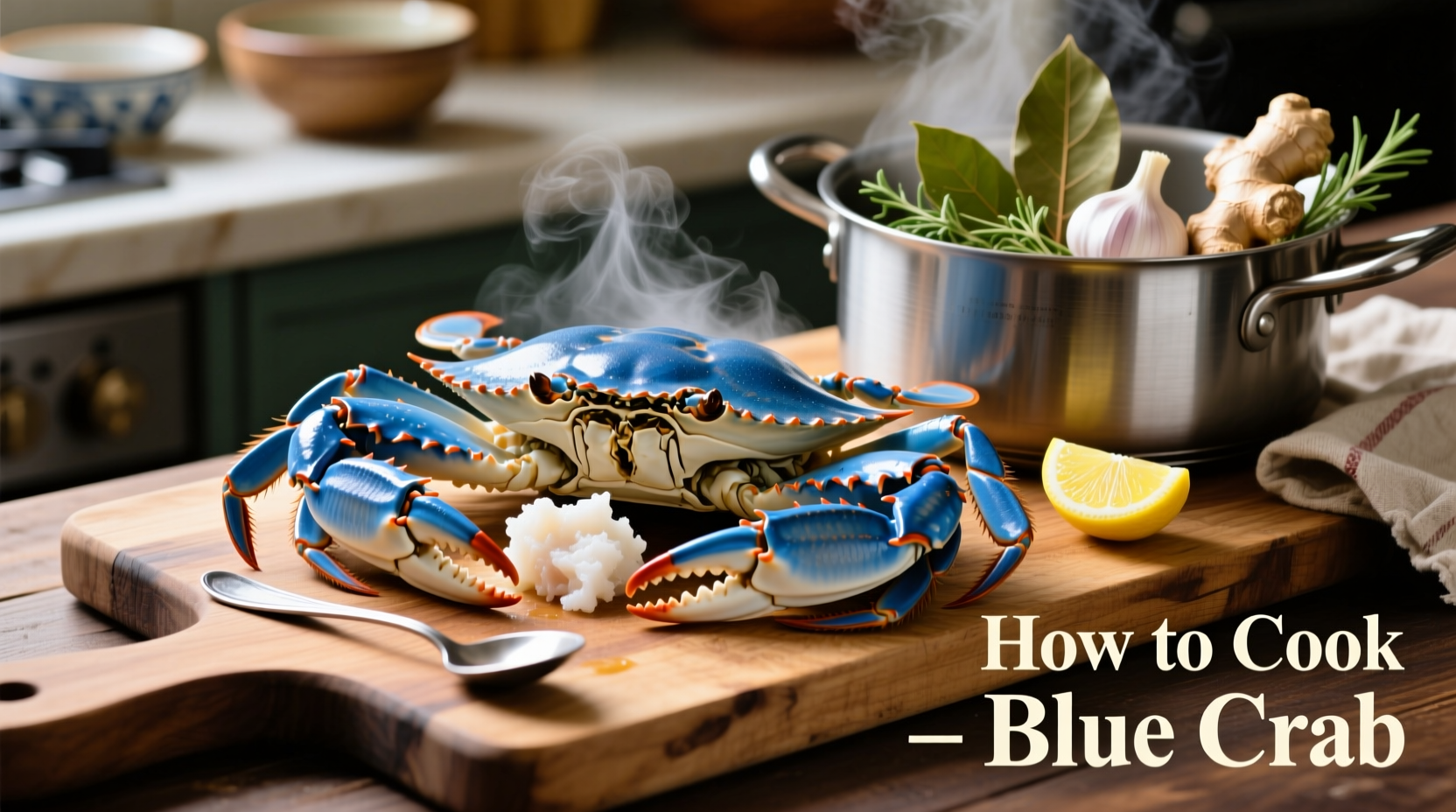Boiling is the most popular method for cooking blue crab, requiring 8-12 minutes in seasoned water with vinegar. Start by selecting live, active crabs, humanely dispatch them, clean thoroughly, then boil in a mixture of water, vinegar, and your preferred seasoning blend until shells turn bright red.
Nothing says summer on the East Coast like a steaming pile of fresh blue crab. Whether you're hosting a backyard crab feast or preparing your first batch, knowing how do you cook blue crab properly makes all the difference between a memorable meal and a disappointing experience. This comprehensive guide walks you through every step to achieve perfectly cooked blue crab with minimal mess and maximum flavor.
Understanding Blue Crab Basics Before You Start
Before diving into the cooking process, it's essential to understand what makes blue crab unique. The Atlantic blue crab (Callinectes sapidus) is prized for its sweet, delicate meat. Unlike other crab varieties, blue crabs must be cooked live for optimal flavor and food safety. According to the NOAA Fisheries, the Chesapeake Bay region produces about half of the U.S. blue crab harvest, with peak season running from May through October.
| Cooking Method | Water Ratio | Cooking Time | Flavor Profile |
|---|---|---|---|
| Traditional Boiling | 4 quarts water + 1 cup vinegar | 8-12 minutes | Most flavorful, shell absorbs seasoning |
| Steaming | 2 inches water in pot | 10-15 minutes | Cleaner taste, less seasoning absorption |
| Grilling | N/A | 6-8 minutes per side | Smoky flavor, requires pre-cooking |
Essential Equipment Checklist
Gathering the right tools before you begin how to cook blue crab saves time and prevents frustration. You'll need:
- Large stockpot (at least 30-quart capacity for a dozen crabs)
- Crab boiler basket or steamer insert
- Crab mallet and picks
- Heavy-duty gloves for handling live crabs
- Cutting board and sharp knife
- Cooler for storing live crabs before cooking
Safety First: Handling Live Blue Crabs
Proper handling is critical when learning how do you cook blue crab. The FDA recommends keeping live crabs on ice until ready to cook to minimize movement and stress. Always approach crabs from behind and grasp firmly behind the claws. For humane dispatch, insert a sharp knife into the apron (the triangular flap on the underside) before cleaning.
Step-by-Step Blue Crab Cooking Process
Follow this timeline for perfect results every time you cook blue crab:
- Prep (5 minutes): Rinse crabs under cold water, removing any debris
- Dispatch (2 minutes): Humanely kill crabs as described above
- Clean (8 minutes): Remove apron, lift top shell, discard gills and mandibles
- Season water (5 minutes): Bring 4 quarts water, 1 cup vinegar, and 1/2 cup seasoning to rolling boil
- Cook (10 minutes): Submerge crabs, return to boil, cook until shells turn bright red
- Drain (2 minutes): Remove crabs, drain thoroughly before serving

Perfecting Your Blue Crab Seasoning Blend
The secret to exceptional how do you cook blue crab results lies in your seasoning. While Old Bay is traditional, consider this professional blend used by Chesapeake Bay chefs:
- 1/4 cup celery salt
- 2 tbsp paprika
- 1 tbsp black pepper
- 1 tbsp cayenne pepper
- 1 tbsp dry mustard
- 2 tsp allspice
- 1 tsp cloves
Mix thoroughly and add 1/4 cup to your boiling water. For extra flavor, toss cooked crabs in melted butter with additional seasoning.
Avoiding Common Blue Crab Cooking Mistakes
Even experienced cooks make these errors when learning how to cook blue crab:
- Overcrowding the pot - Cook in batches to maintain water temperature
- Underseasoning - Blue crab needs generous seasoning to penetrate the shell
- Overcooking - Leads to rubbery meat; 12 minutes is maximum for medium crabs
- Skipping the vinegar - Helps prevent meat from sticking to the shell
- Not cleaning properly - Removes unwanted parts that affect flavor
Serving Your Perfectly Cooked Blue Crab
Present your how do you cook blue crab masterpiece traditionally by layering newspaper on a large table. Serve with:
- Crab mallets and picks
- Lemon wedges
- Melted butter with garlic
- Cold beer or iced tea
For leftovers, store cooled crabs in airtight containers for up to 2 days. Never freeze whole cooked crabs - pick the meat first for best results.
Frequently Asked Questions
Below are answers to common questions about how do you cook blue crab properly:
How long should I boil blue crabs?
Boil blue crabs for 8-12 minutes in vigorously boiling water. Smaller crabs (under 5 inches) need 8 minutes, while larger crabs require up to 12 minutes. The shells should turn bright red when properly cooked.
Do I need vinegar when cooking blue crabs?
Yes, adding 1 cup of vinegar to your boiling water helps prevent the meat from sticking to the shell and enhances the natural sweetness of the crab. The vinegar also helps maintain water temperature when adding crabs.
How can I tell if blue crabs are cooked properly?
Properly cooked blue crabs will have bright red shells (not brownish-orange). The meat should be opaque white with firm texture. Undercooked crabs will have translucent meat and may appear grayish. Overcooked crabs become rubbery and difficult to pick.
What's the minimum legal size for keeping blue crabs?
According to NOAA Fisheries regulations, the minimum legal size for female blue crabs is 5 inches across the widest part of the shell ("spawl"). For males, the minimum is 5 inches in most states, though Maryland requires 5 1/4 inches. Always check your local regulations before harvesting.
Can I steam instead of boil blue crabs?
Yes, steaming is an excellent alternative that produces cleaner-tasting crab. Use 2 inches of water in your pot with seasoning, bring to boil, then steam crabs for 10-15 minutes. Steaming prevents some seasoning from washing off but requires slightly longer cooking time than boiling.











 浙公网安备
33010002000092号
浙公网安备
33010002000092号 浙B2-20120091-4
浙B2-20120091-4